Advertisement
How To Use A Soil Moisture Meter & 5 Picks For 2025

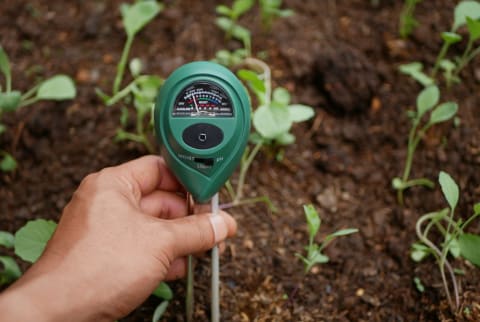
Giving your greenery too much sun or not enough humidity can cause some damage, but the fastest way to kill a plant is by overwatering it. Too much water can deprive your plant's roots of the oxygen they need to survive and set the stage for disease-causing bacteria and fungi—not exactly things you want in your thriving garden.
Soil moisture meters are designed to prevent overwatering and contribute to the health of your plants. Here's a breakdown of five meters that plant professionals trust, and how they recommend using them.
What is a soil moisture meter?
True to their name, soil moisture meters measure the amount of water in soil that's available to your plant. While you can get an idea of how wet the soil is simply by looking at it or sticking your fingers in it, these meters extend deeper than our hands and eyes can and more accurately measure what's going on at root level.
"Even at first glance, the top layer of soil could look dry, but beneath the surface, it could have plenty of moisture," explains Kelly Funk, the president of Park Seed. "Meters will tell you instantly whether plants need water or have enough."
This makes them a helpful tool for people who are prone to overwatering, don't have much time to dedicate to plant care, or have many plant varieties at home and have trouble keeping track of who needs what. (Your Maidenhair fern will need far more water than the moon cactus next to it.) Brooke Blocker, the founder of Outside In, adds that they can also be good for those with tall indoor plants and trees since they can reach so far into their soil.
Contrary to what you might assume, these meters don't measure moisture per se, but electrical conductivity. "As water is a natural conductor of energy, more water in your soil would translate to more energy conductivity, and less moisture translates to less conductivity," explains Lorin Nielsen, the editor in chief of Epic Gardening.
You can also find more complex meters that measure things like soil acidity and temperature.
How to use a soil moisture meter
Here are a few pro tips and tricks to keep in mind when using any soil moisture meter:
- Clean it off before you use it: "Start by making sure the probes on your moisture meter stay clean," says Justin Hancock, a horticulturist at Costa Farms. Any leftover soil could throw off your reading. You don't want to leave a soil moisture meter in your plant for too long either; remove it after each reading and store in a clean spot.
- Get the probe down to root level: Once your meter is wiped down and ready to go, stick the probe into your soil until you've reached the plant's root level. "The surface of the soil is going to fluctuate depending on the time of year, weather conditions, and other variables," says Nielsen. "So you just want to focus on the soil at least 3 to 4 inches down for good readings, and it's better still if they can check down to 6 to 8 inches deep."
- Double-check your readings: Blocker says that it's never a bad idea to test a plant's soil twice. Remove the probe, wipe it down, and then stick it in another area of the soil to get a better sense of what's going on down there. Readings may fluctuate a little bit in different parts of your plant, which is normal.
- Use your own intuition: All of the experts interviewed for this piece cautioned that you shouldn't rely on soil moisture meters 100% of the time. Even the most accurate ones can get glitchy! "It's always a good idea to look at your plant holistically," Hancock says, so you'll still want to look out for signs of overwatering and underwatering and let your instincts tell you what your plant needs.
- If all else fails, use it for aeration: After playing around with a soil moisture meter, you may find that you don't get much use out of it for one reason or another. This was the case for Maria Failla, the founder of The Bloom & Grow Garden Society and author of the upcoming book Growing Joy. But instead of throwing it away, she found a way to repurpose her moisture meter as an aeration tool. "If you have a plant that gets too compact, those probes are perfect to stick in the soil and gently wiggle to help the soil break up," she says.
What to consider when choosing your moisture meter
Soil moisture meters are far from one-size-fits-all, and finding the right one for you will take some thoughtful consideration. "It's always best to determine your specific needs, environment, and plant requirements when choosing a meter," notes Funk.
Before we jump down to product recommendations, here are a few things to think about as you're browsing:
- Where you'll use it (indoors, outdoors, or both): While most soil moisture meters are suitable for outdoor and indoor plants, you'll want to double-check that you're buying one that has the right features for your space.
- What kind of soil you have: If your plants are sitting in more compact soil, read the reviews to ensure that your moisture meter can withstand harder conditions. Funk adds that you also need to make sure any meter you buy is long enough to get down to your plant's roots. Typically, the deeper the probe, the more accurate the reading, she notes.
- What type of reading you prefer (analog or digital): These days, soil moisture meters run the gamut from simple analog readers to digital tools that may even connect to your smartphone. While higher-tech meters can be fun to play around with, Funk notes that they are also more prone to glitches and might not be best for harsh outdoor areas. They need to be kept charged, which is another thing to consider. "Some require USB charging, others have batteries that need to be changed, so depending on what model you get you'll need to keep an eye on it to make sure it's still working optimally," cautions Nielsen.
- How specific of a reading you need: Basic meters measure moisture on a 10- (or so) point scale. This should be plenty detailed for people who are just using them for routine plant care. However, those who are using them for something like commercial growing might want to go with more granular readings. "A good indication is the smaller the intervals on the scale, the more accurate it is," says Funk.
- How long you'll use it for: Finally, consider how much you're hoping to put your meter to work. If you're buying one for the first time just to test it out, a basic affordable option will be great. If you're hoping to use it for growing seasons to come, Hancock recommends looking for one with a multi-year guarantee.
Pro recommendations
These are the moisture meters that experts trust with their precious soil, and a bit about the pros and cons, use cases, and special features of each.
Best all-around (digital): ECOWITT Soil Moisture Tester
Nielsen and the team at Epic Gardening vouch for this smart monitor that's suitable for both indoor and outdoor plants, and especially great for raised garden beds. Its waterproof reader will give you a sense of your soil's moisture levels (on a scale of zero to 100%) within 72 seconds. You can also adjust the reader based on your plant's soil needs for further customization.
Pros: Granular reading, easy-to-read display
Cons: Not suitable for hard soil
ECOWITT Soil Moisture Tester ($26.99)

Best all-around (analog): XLUX Soil Moisture Meter
For those who prefer no-fuss analog readers, this one from XLUX is basic but effective. Stick the 7-inch probe into your soil for a quick moisture reading on a scale of zero (dry) to 10 (saturated). It doesn't require any batteries or fuss and is suitable for indoor and outdoor plants. Reviewers note that it is also very accurate for the price.
Many experts agree that sticking with a one-note reader like this is a good move, as fancier meters that measure things like pH, soil nutrients, etc., leave more room for error. Sometimes, simple is best!
Pros: Affordable, easy to use
Cons: Not suitable for larger pots
XLUX Soil Moisture Meter ($12.99)
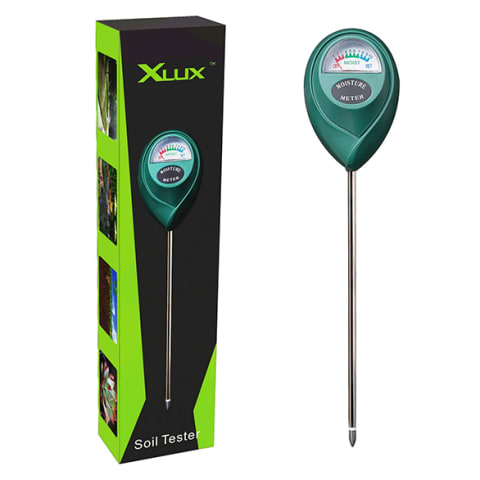
Best for outdoor plants: Kensizer 3-in-1 Soil Tester
But for those who are hoping to go beyond just moisture, this 3-in-1 tester for Kensizer has thousands of five-star reviews. Its display window is a one-stop shop for moisture (zero to 10), soil pH (eight to three and a half), and sunlight level (zero to 2,000 lux) readings. At 7 inches, it's not as long as some of the other probes on the list, and experts note that your pH and sunlight readings can be faulty, so it's best to double-check them and use your intuition about what your plants need too.
Pros: No batteries required, 3-in-1 reading
Cons: pH and sunlight readings might not be accurate all the time
Kensizer 3-in-1 Soil Tester ($13.99)
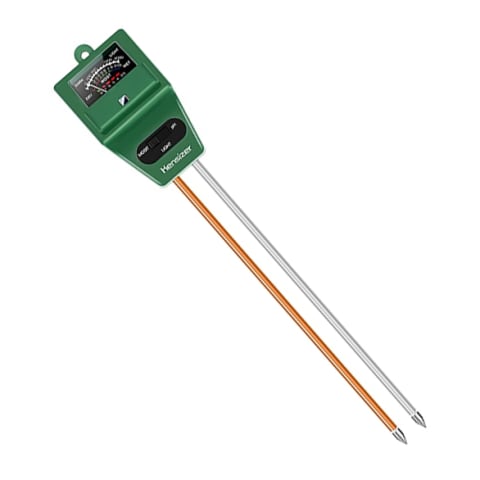
Best for compost: REOTEMP Garden and Compost Moisture Meter
It's important to maintain a midrange moisture level in your compost to ensure proper decomposition. "For people who are maintaining a compost pile, we're fond of the REOTEMP brand's compost moisture meters," notes Nielsen. She appreciates that these heavy-duty 15-inch probes are long enough to get to the center of most at-home compost piles (though vermicomposters can get away with a smaller probe).
They are also very sturdy and suitable for outdoor plants, raised beds, and larger houseplants. They have a simple analog reading on a scale of zero to 10, so those looking for more granular information will want to go with something else.
Pros: Easy to read, long probe
Cons: Simple reading on scale of zero to 10 (a con for some, pro for others)
REOTEMP Garden and Compost Moisture Meter ($29.99)
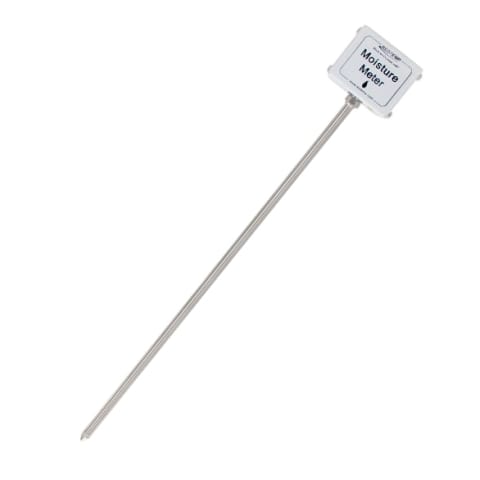
Best for indoor plants: Greenery Unlimited Monitor Brass Soil Probe
For houseplant lovers looking to give their plants a little extra TLC, this probe from Greenery Unlimited is a sleek pick. Its grooves allow you to see your plant's soil for yourself: Simply stick it into your container, pull it up gently, and assess how the soil looks and feels to you. This low-tech option can help you get a better feel for your plant's individual drainage needs, and it serves as an A+ aerator for compact soil, too.
Pros: Aesthetically pleasing, teaches you more about your plants
Cons: Requires you to make your own readings
Greenery Unlimited Monitor Brass Soil Probe ($35)
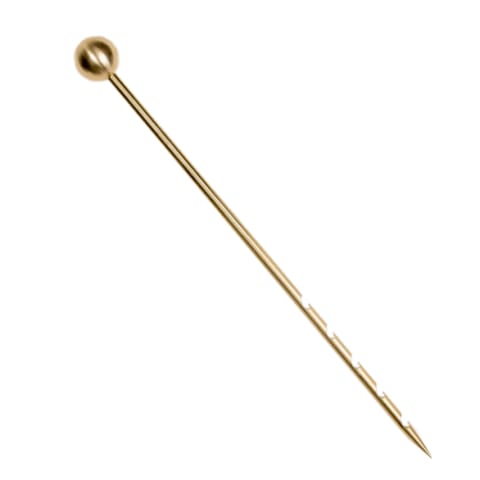
The takeaway
While soil moisture meters won't give you accurate readings 100% of the time, as Nielsen notes, it can never hurt to have more information about your watering regimen! If you're hoping to give your garden or houseplants just the right amount of moisture, this is one tool that might be helpful to you.
Just remember to double-check everything yourself, as nothing compares to human touch.